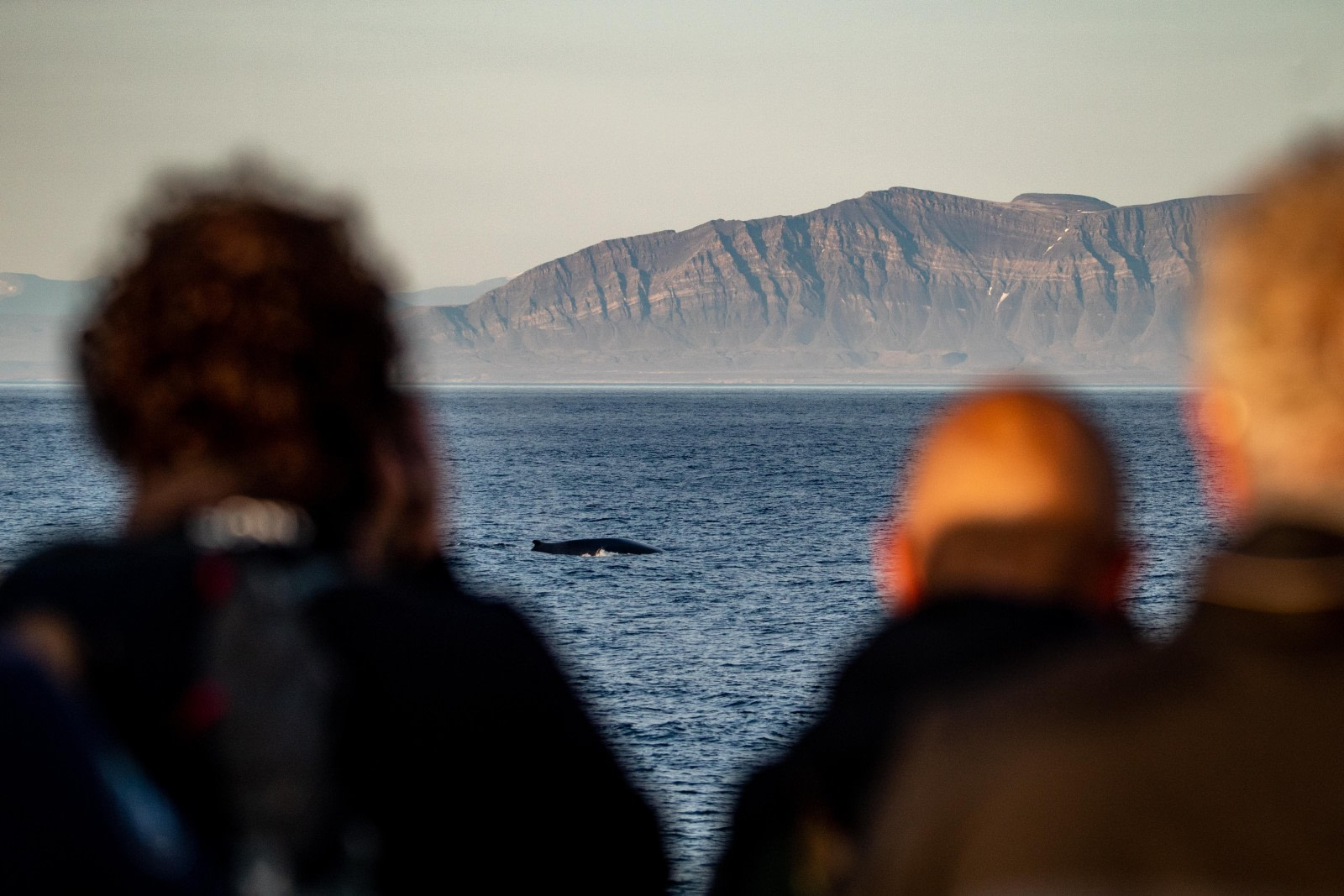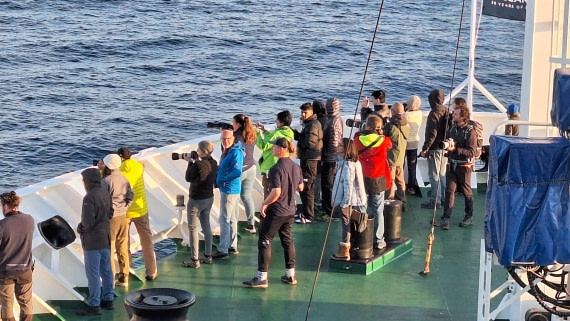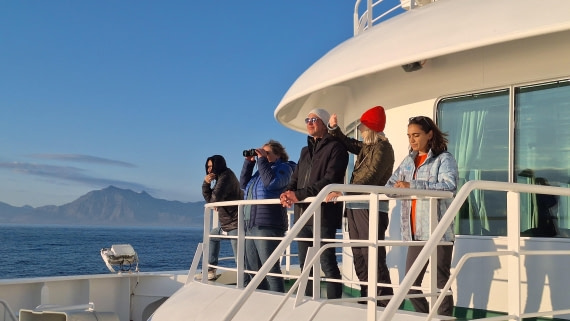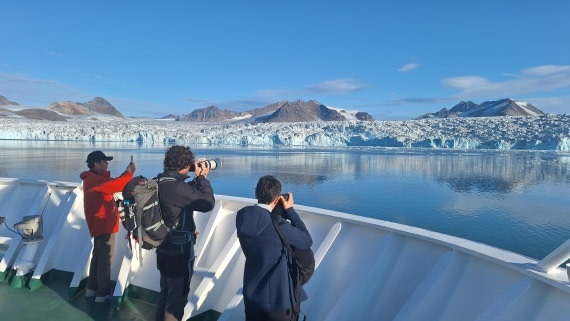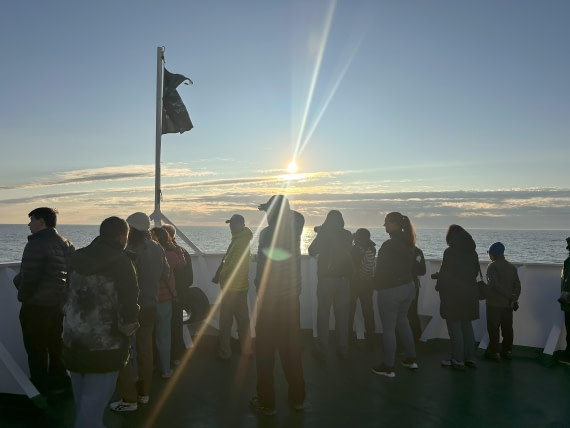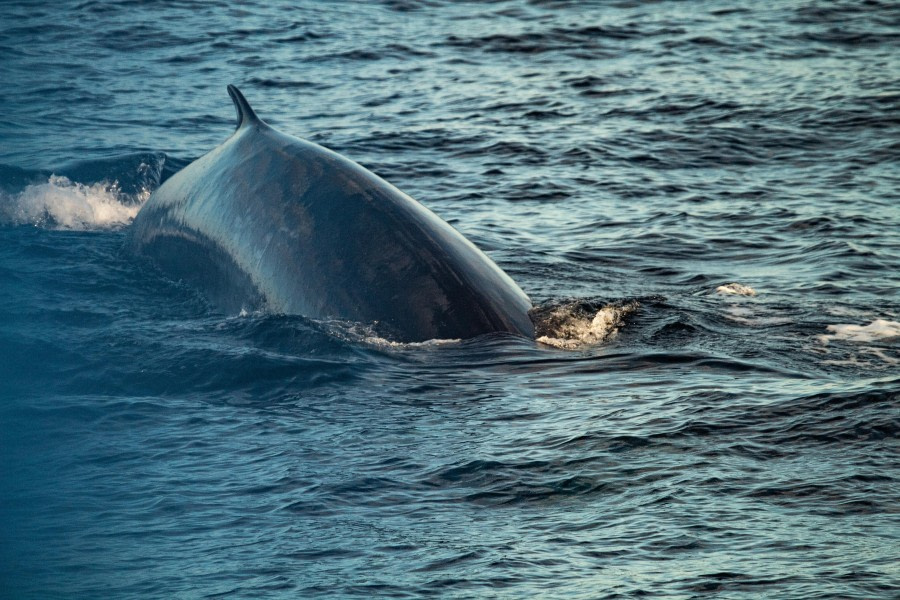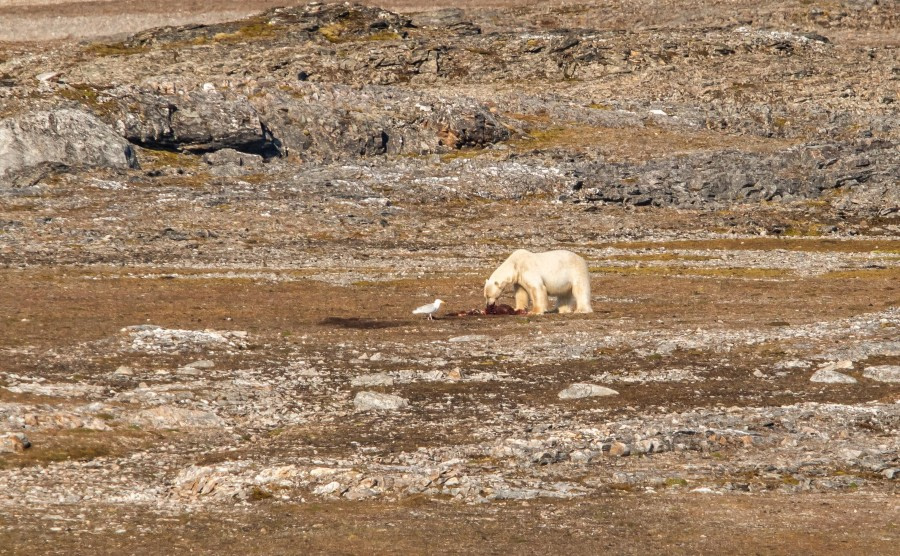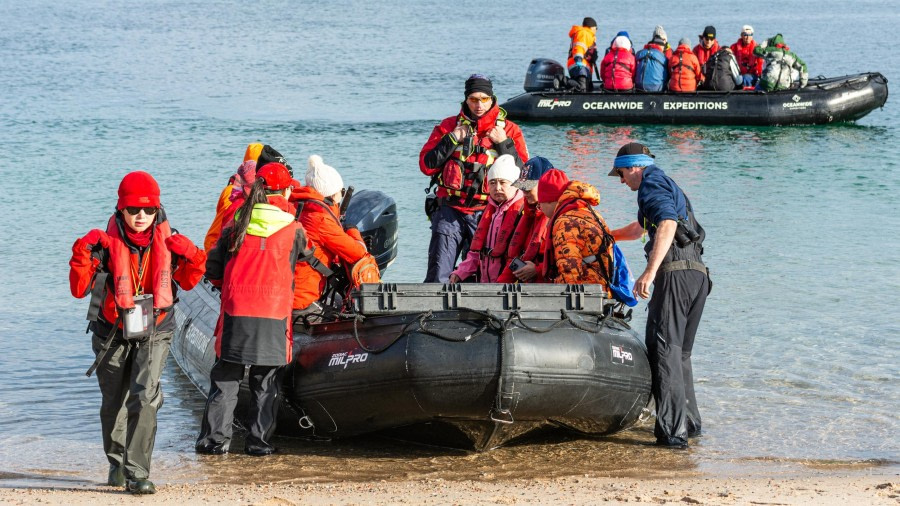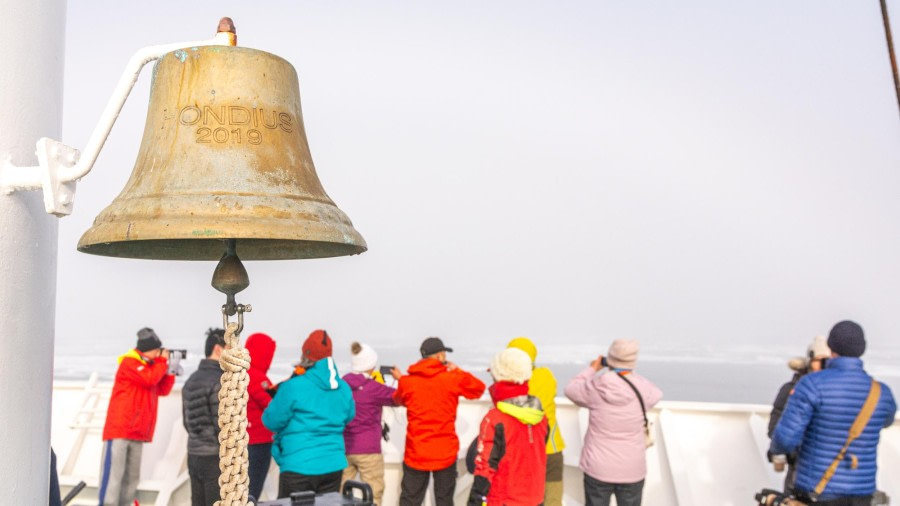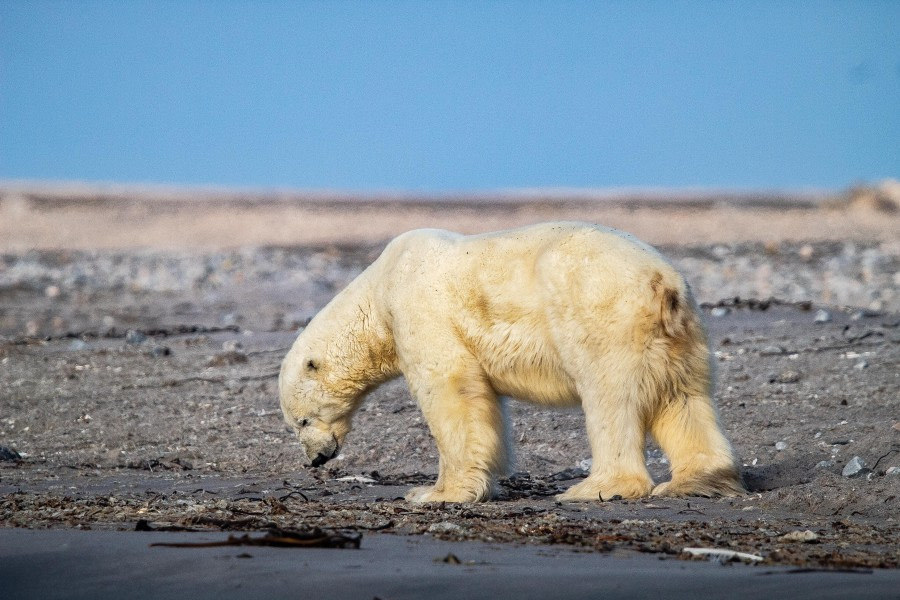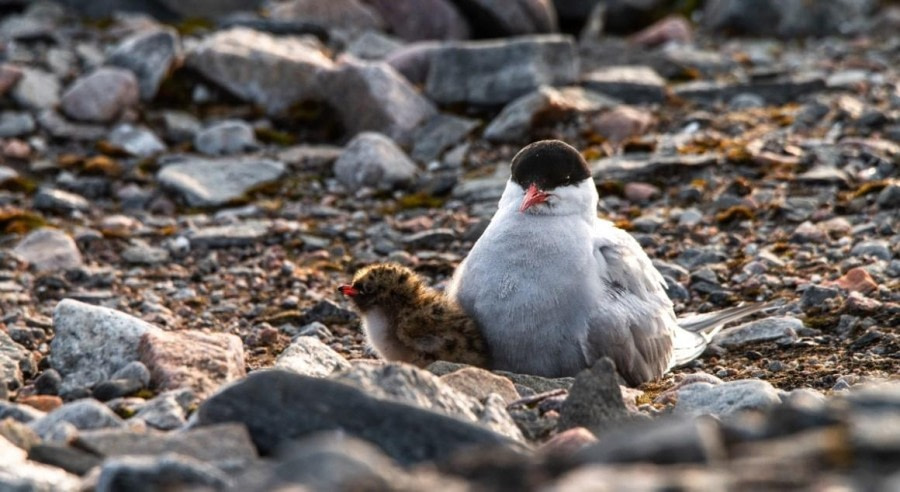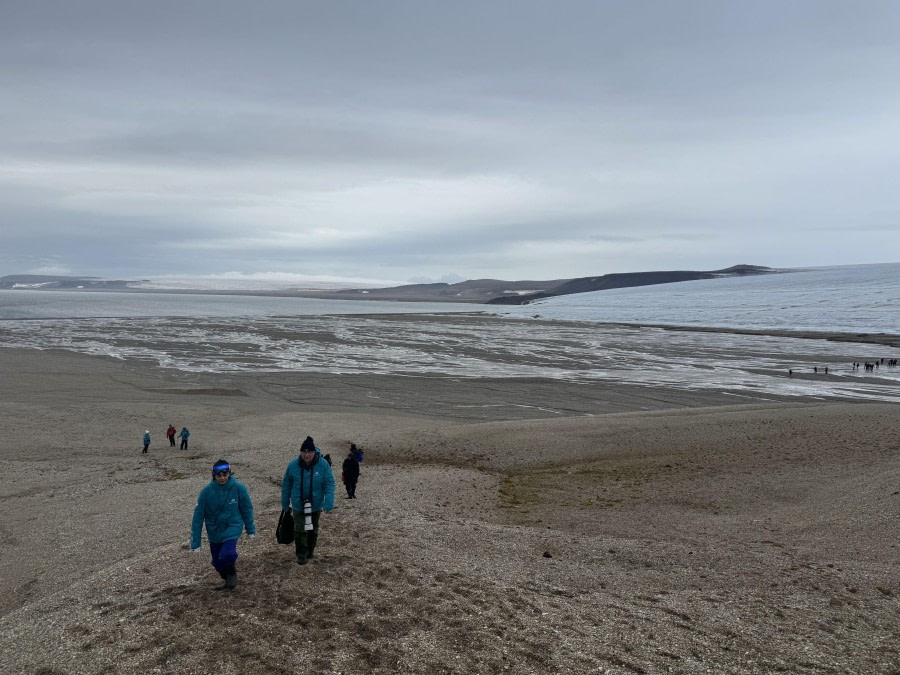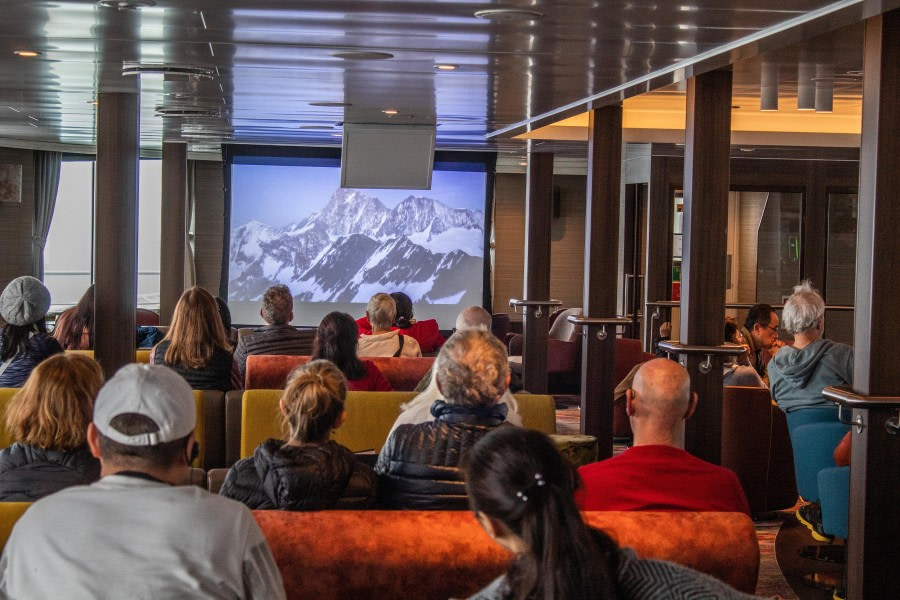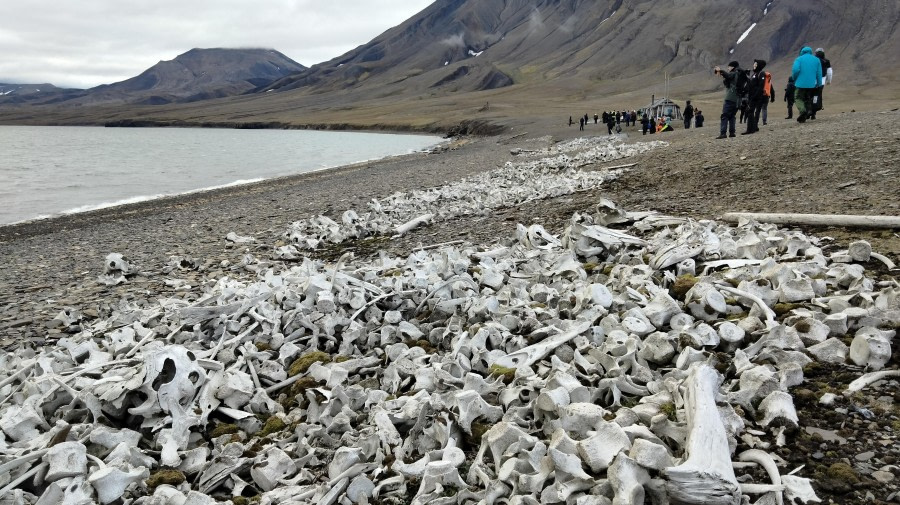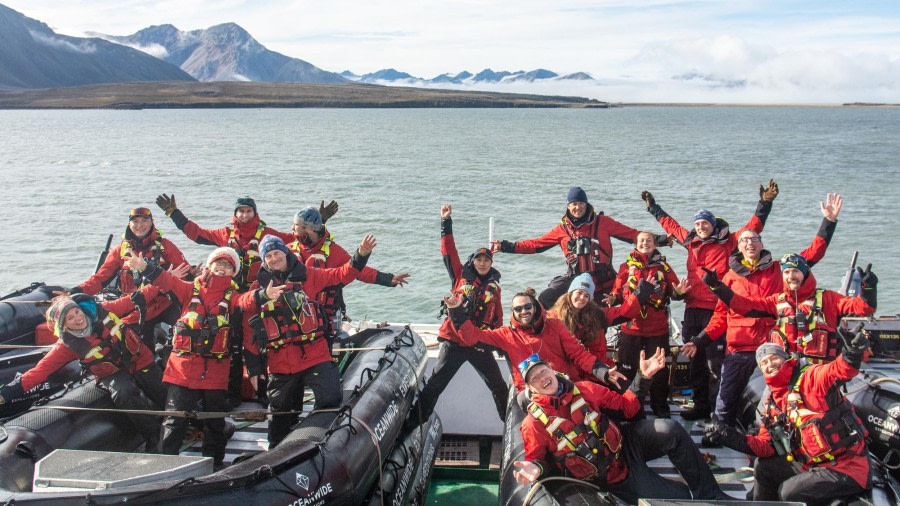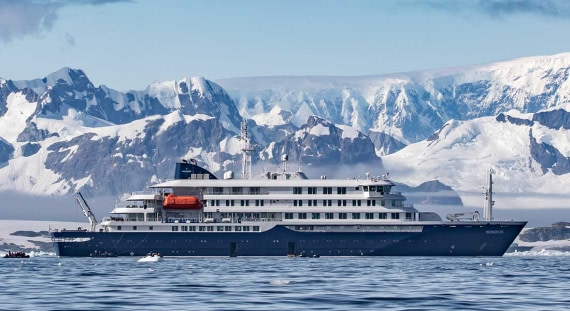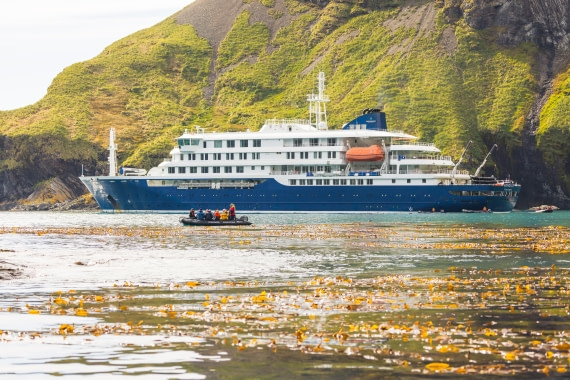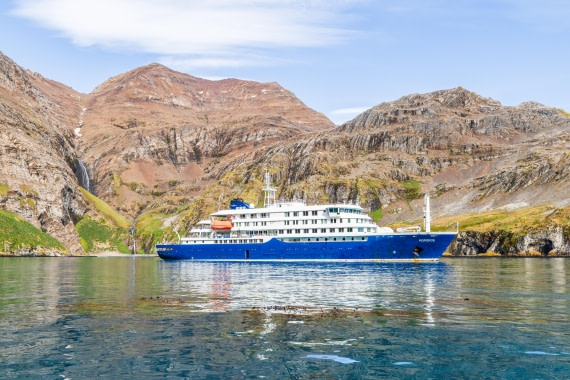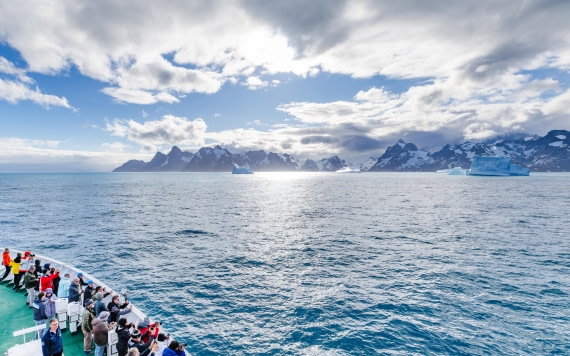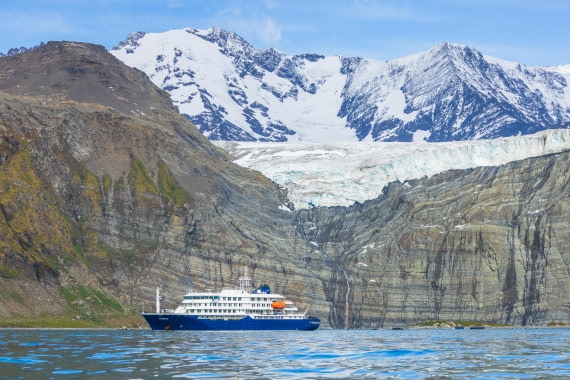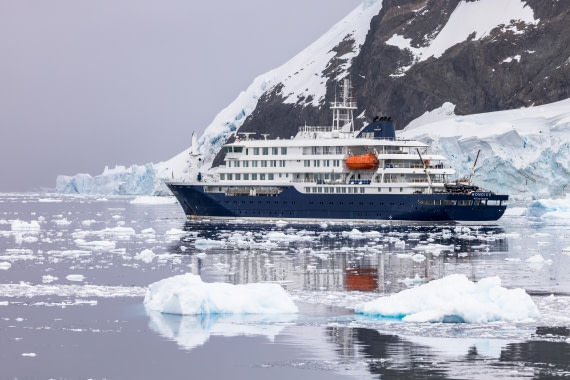| Date: |
14.08.2024 |
| Position: |
79°32.9’N, 019°17.0‘E |
| Wind: |
SSE 5 |
| Weather: |
Rain |
| Air Temperature: |
+4 |
Today would be another eventful day for us. Early in the morning, we were awakened by the sound of birds. However, this time it wasn't a rooster or the usual garden songbirds. No, this time it was the sound of hundreds of Brünnich's guillemots flying over and close to our ship.
Overnight, we passed along the ice edge of the Bråsvellbreen en route to the Hinlopen Strait. Now, we were facing massive basalt cliffs, inhabited by hundreds of thousands of birds. We were in beautiful Alkefjellet.
After breakfast, we boarded the zodiacs and set out for our cruise. It was raining, but that didn't prevent us from witnessing this amazing spectacle of nature. We approached the cliffs while groups of birds were flying around us. We first admired the waterfalls cascading down the steep rocks. Even without the large numbers of birds, the cliffs were impressive. The rock masses, consisting of basalt and sandstone, plunged steeply downwards. In some spots, even white marble could be seen.
Soon, we spotted the first birds on the cliffs. These animals, resembling penguins in colour, were Brünnich's guillemots. A seabird commonly found in Svalbard, with about 120,000 individuals in this spectacular colony. The guillemots were lined up tightly on the bare rock, making it difficult to spot the chicks behind the parent birds. The Brünnich's guillemot doesn’t build a nest, they simply incubate their egg on the rocks. They prefer very steep cliffs with small edges as this protects them better from potential predators such as foxes and glaucous gulls. In some places it resembles a big city centre with high rise buildings and many people living in small apartments.
As we continued along the cliffs, we observed other nesting birds, such as the kittiwake. Unlike the guillemots, these birds build proper nests in which they lay two to three eggs. They are easily recognizable by their black wingtips.
The Glaucous gull also nests here, the largest gull species in Svalbard often found at the top or bottom of bird colonies. It is one of the most dangerous predators for birds in the colonies, preying on eggs, chicks, or weak birds. We observed their chicks, which were brown compared to the grey-white adult birds, making their first attempts at flying.
Once we reached the best breeding locations on the steepest cliffs, thousands of birds were flying over our heads. The colony was bustling with activity, making it difficult to focus on individual animals or moments. It was an incredible sighting to witness and a highlight of this trip for many of us. Alkefjellet has been documented in many nature documentaries and that tells you how special this place is. To top it off, a minke whale bid us farewell, passing right by our zodiacs.
In the afternoon we reached our next destination, Torrelneset. Seeing only a few walruses on the beach and not wanting to disturb them, we opted to visit the nearby glacier which is part of the Glitnefonna ice cap.
We decided to do a split landing. The red group would go on land first while the blue group was invited to a lecture about Svalbard’s arctic birdlife by Marcel. After the changeover the red group had the opportunity to listen to a similar lecture by Rao.
Once on land, we explored the new territory as it was our first-time setting foot on Nordaustlandet. While we had navigated around the island in the past days and visited nearby islands, the mainland had been unexplored until today.
Our short trip involved crossing several small rivers, with fast currents posing a fun challenge for some of us. Despite the effort, reaching the glacier edge was very much worth the efforts. Along the way, we came across polar bear skeletons, reindeer antlers, and even some fossils like petrified shells or fern leaves dating back hundreds of millions of years.
At the end of the hike, some of us braved the icy waters for a Polar Plunge, an unforgettable experience despite the chilly conditions. Some of us walked in as if they were walking into tropical waters while others expressed a more common reaction with loud screams and accelerated breathing.
Back on the ship, it was time to celebrate our so far very successful expedition. We had planned a nice barbeque dinner outside, but unfortunately it was still raining and with strong winds this wasn’t the setting we were hoping for. But that couldn’t spoil the program, the barbeque meat was still grilled outside, and it was simply brought to our warm and cosy restaurant. Although we had stretched our legs already quite a bit during the day, it was now time to move a bit more and dance in the observation lounge! y
Another wonderful day, good night everyone!
